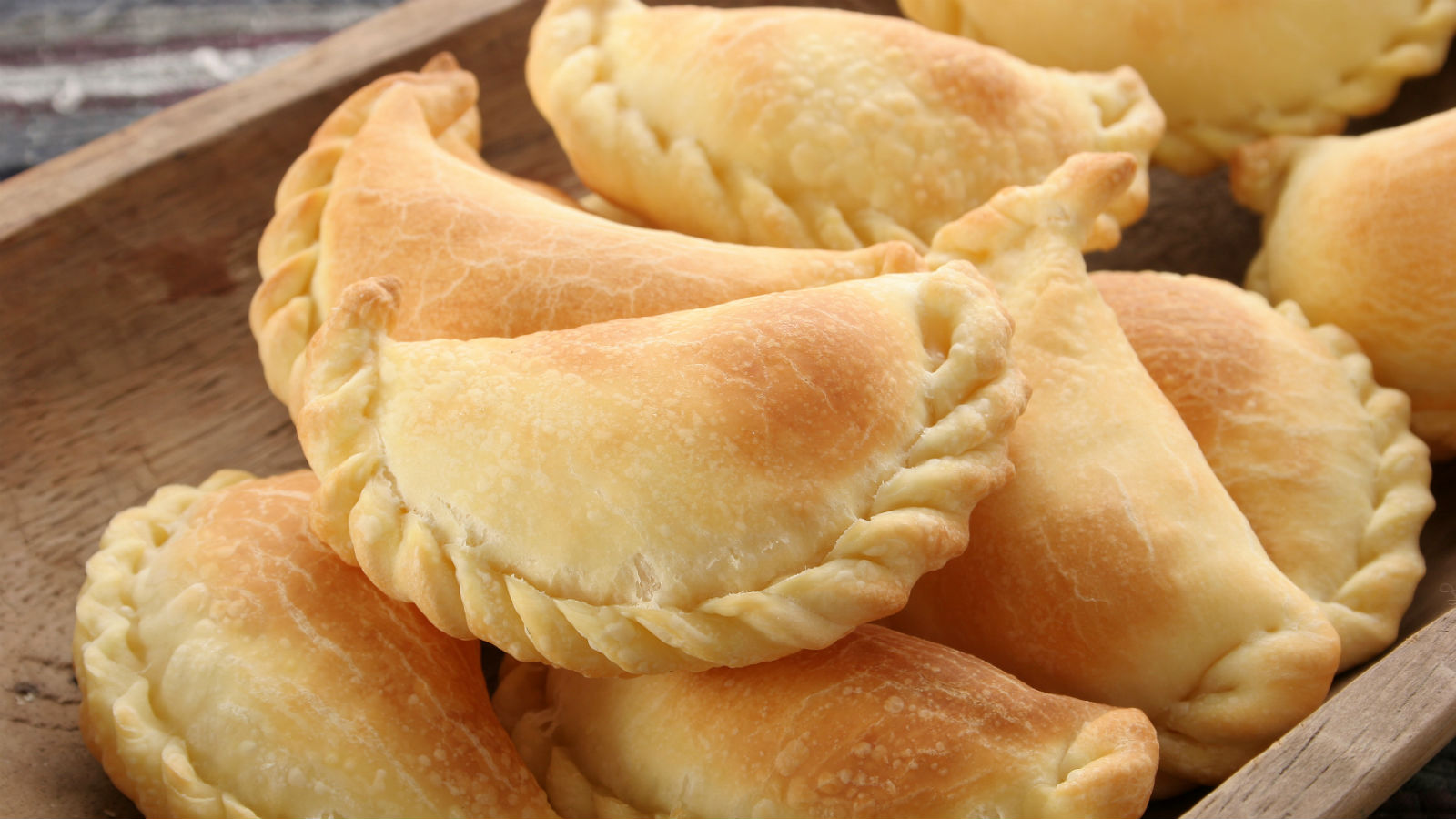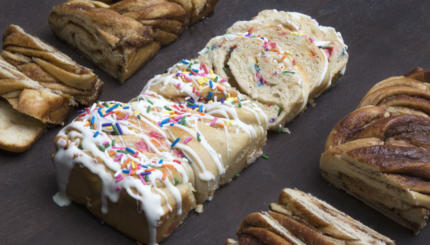Bastel & Sambussak
Savory filled pockets, a favorite Syrian appetizer
Ingredients
1/4 cup sesame seeds
2 to 4 tablespoons ice water, if needed
1 teaspoon baking powder
1 teaspoon baking powder 3/4 t salt (for bastel only)
1 cup semolina flour (available in natural food and Middle Eastern stores)
1 1/2 cups (3 sticks) unsalted butter or margarine, softened to room temperature
2 cups unbleached all-purpose flour
1 cup pomegranate seeds (from about 1 large pomegranate; see note below)
Several grindings of black pepper
1/2 teaspoon salt
3/4 teaspoon ground allspice
3/4 teaspoon ground cinnamon
1/4 cup pine nuts
1 pound ground chuck
1 1/3 cups finely chopped yellow onions
2 tablespoons vegetable oil
4 cups coarsely grated kashkevalle cheese or mix half Parmesan and half Muenster cheese
1/4 teaspoon baking powder
3 large eggs, lightly beaten
Directions
1. Prepare the sambussak filling. Pour the beaten eggs into a bowl. Add the baking powder and grated cheese(s) and mix well.
Prepare the bastel filling. Heat the vegetable oil in a large skillet for about 30 seconds over high heat. Cook the onions, stirring, until softened, about 3 minutes. Add the pine nuts and cook, stirring, until the onions are golden. Add the meat and brown, mashing with a fork, until it loses its redness. Add the cinnamon, allspice, salt, and pepper and cook for another 1 minute. Take off the heat and let cool to room temperature. Mix in the pomegranate seeds and set filling aside to prepare dough.
2. Prepare the dough. Put the all-purpose flour, semolina, softened butter (or margarine, for bastel, baking powder, and salt (if making bastel) in a large bowl. Mix by squeezing everything between the tips of your fingers. The dough should be soft and moist (sprinkle with the ice water if the dough is too dry to work).
3. Preheat the oven to 350°F if you intend to bake the pastries (you can also freeze the pastries and bake at a later date).
4. Form the dough into small balls 1 to 1 1/2 inches in diameter. Working with one ball of dough at a time, press one side into the sesame seeds until well coated (diagram A).

Lightly flour a wooden work surface. Place the ball on the surface, sesame seed side down. Flatten it gently with your palm. Using the bottom of a lightly floured round glass or rolling pin, form a circle 2 1/2 inches in diameter and about 1/8 inch thick.
5. Place a teaspoon of filling (cheese or meat) in the center of the dough circle (diagram B).

Fold one side of the dough over until the edges meet. Press the edges together all around to firmly seal. This will form a half-moon shape (diagram C).

Using your thumb, gently press around the edges to “plump” the filling toward the center (this will help each pastry puff up a bit when it bakes).
6. There are two methods of decorating the edges: The traditional edging, which gives each pastry a fancy “braid” look, is created by starting at one end of the dough, pinching it between thumb and forefinger, and then gently twisting the dough inward (diagram D).

If this is too difficult, you can flute the edges with the tines of a fork (diagram E).

7. Bake for 15 to 20 minutes on an ungreased baking sheet. When done, the edges should be lightly golden but not brown and the tops should stay on the light side. (If the pastries are baked too long, the filling will dry out.) Serve warm, which is preferable, or at room temperature.
To freeze either bastel or sambussak, place the uncooked pastries between layers of wax paper in a tightly sealed plastic container (the pastries will last about 2 months in the freezer). Defrost and bake in a preheated 350°F oven until the outside is flaky.
NOTE: To remove the seeds from a pomegranate, cut one into quarters. Holding one piece of the fruit at a time, use your fingers to gently dislodge the sm



